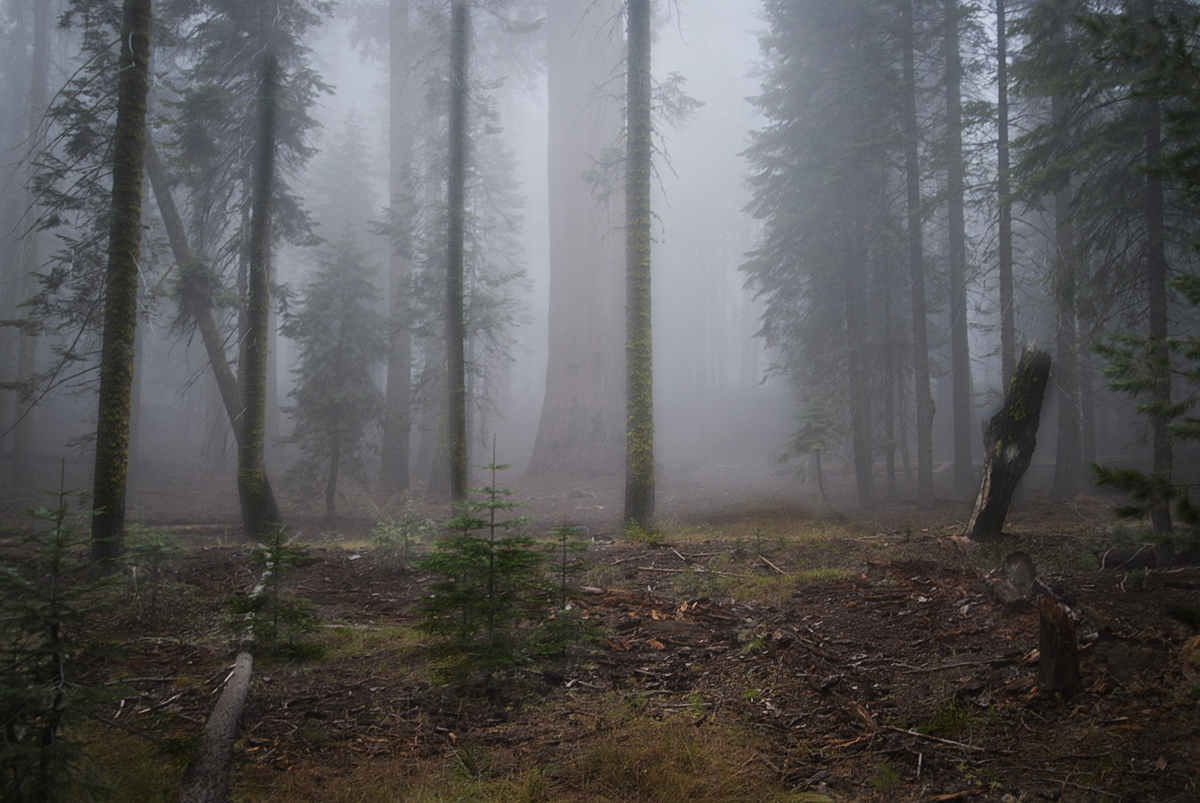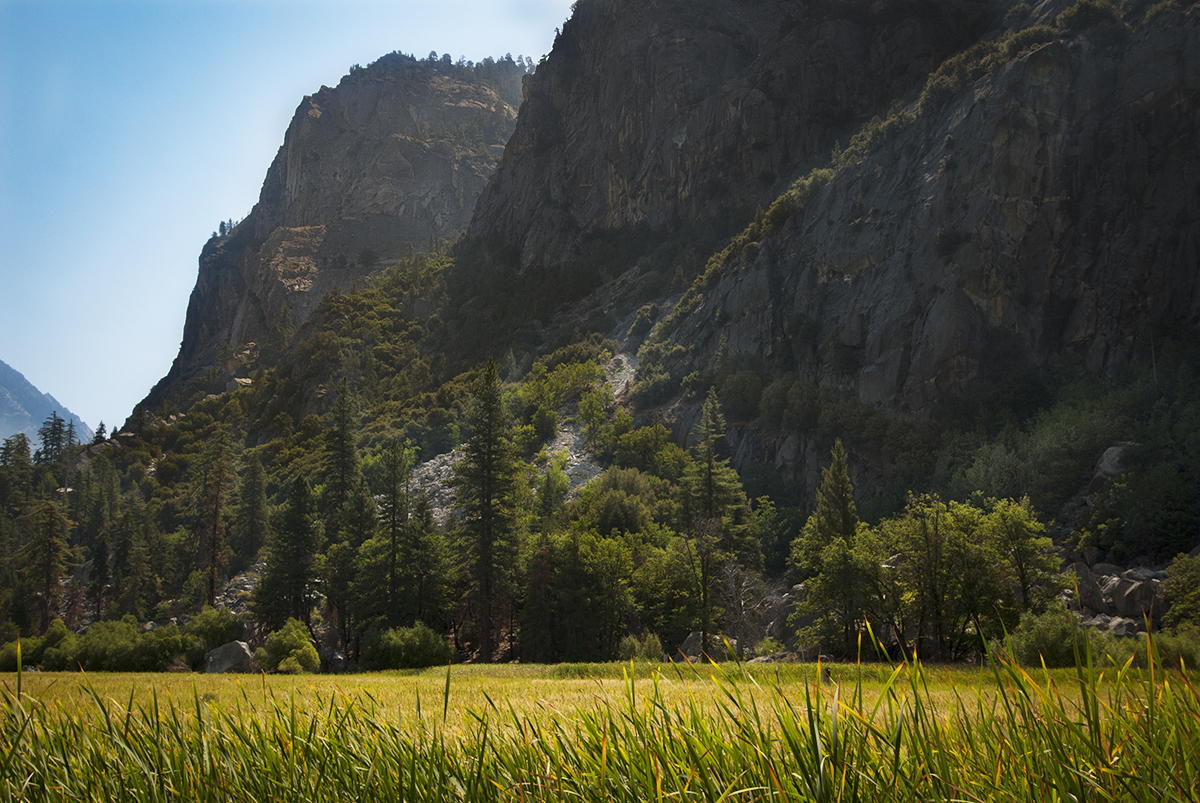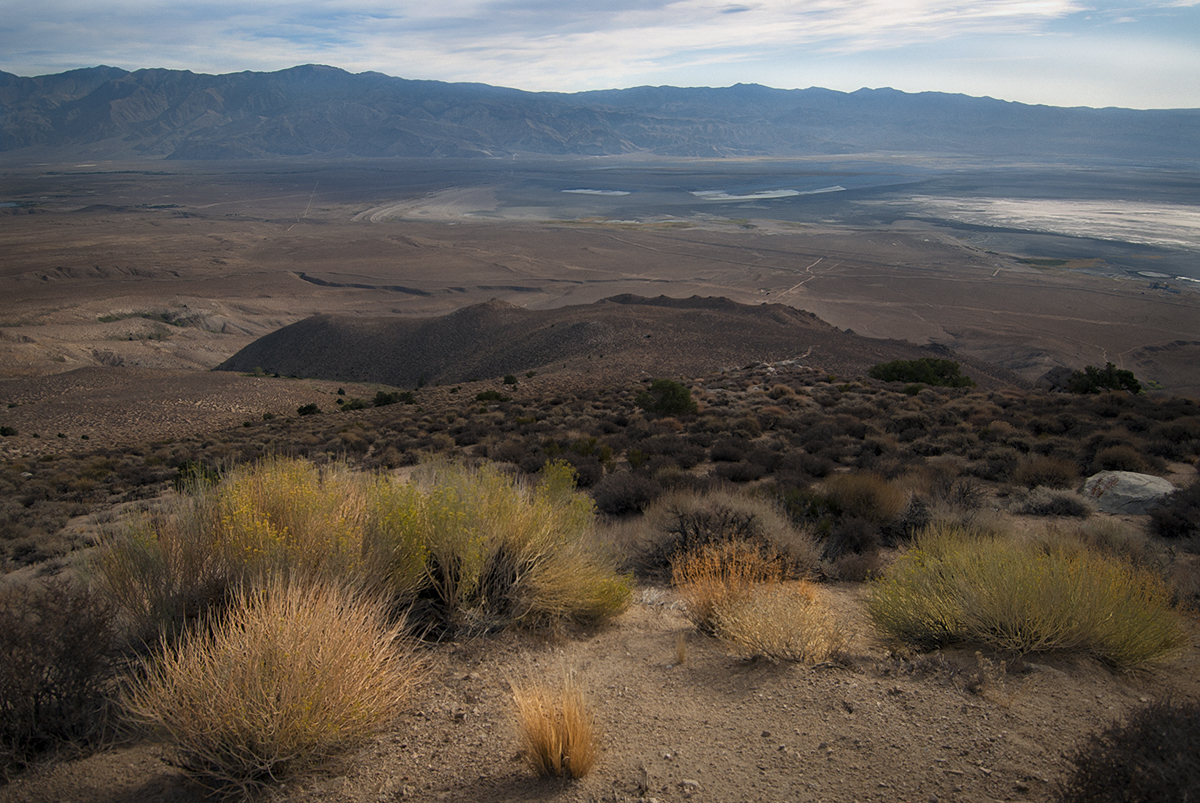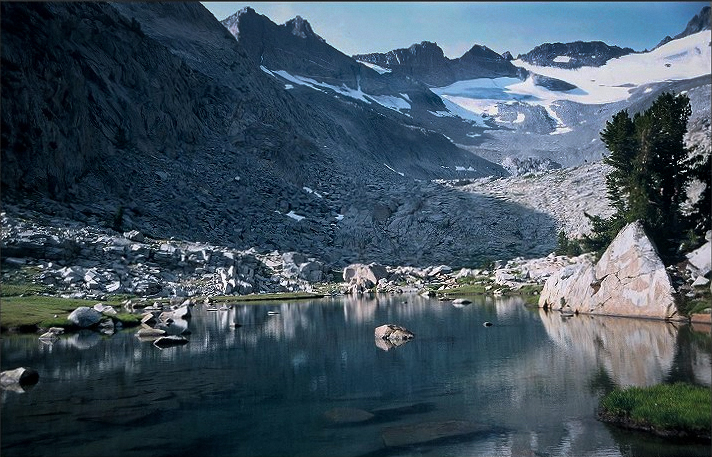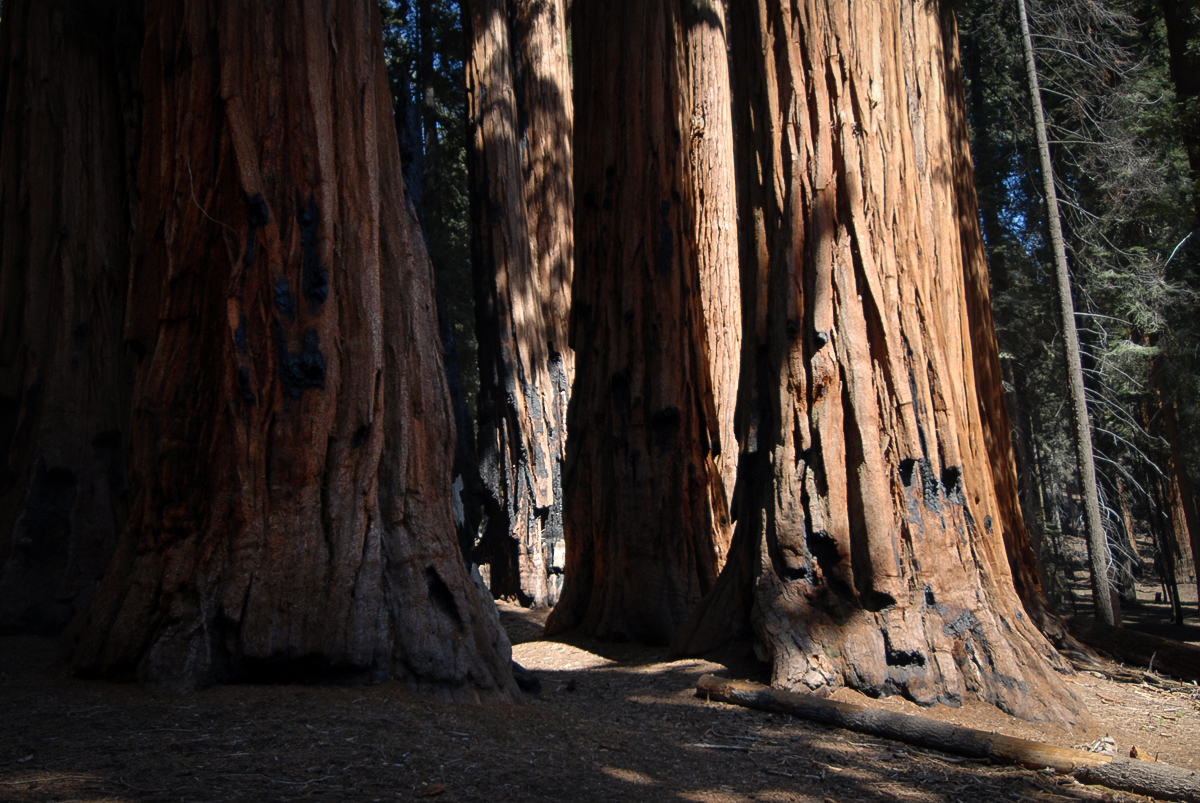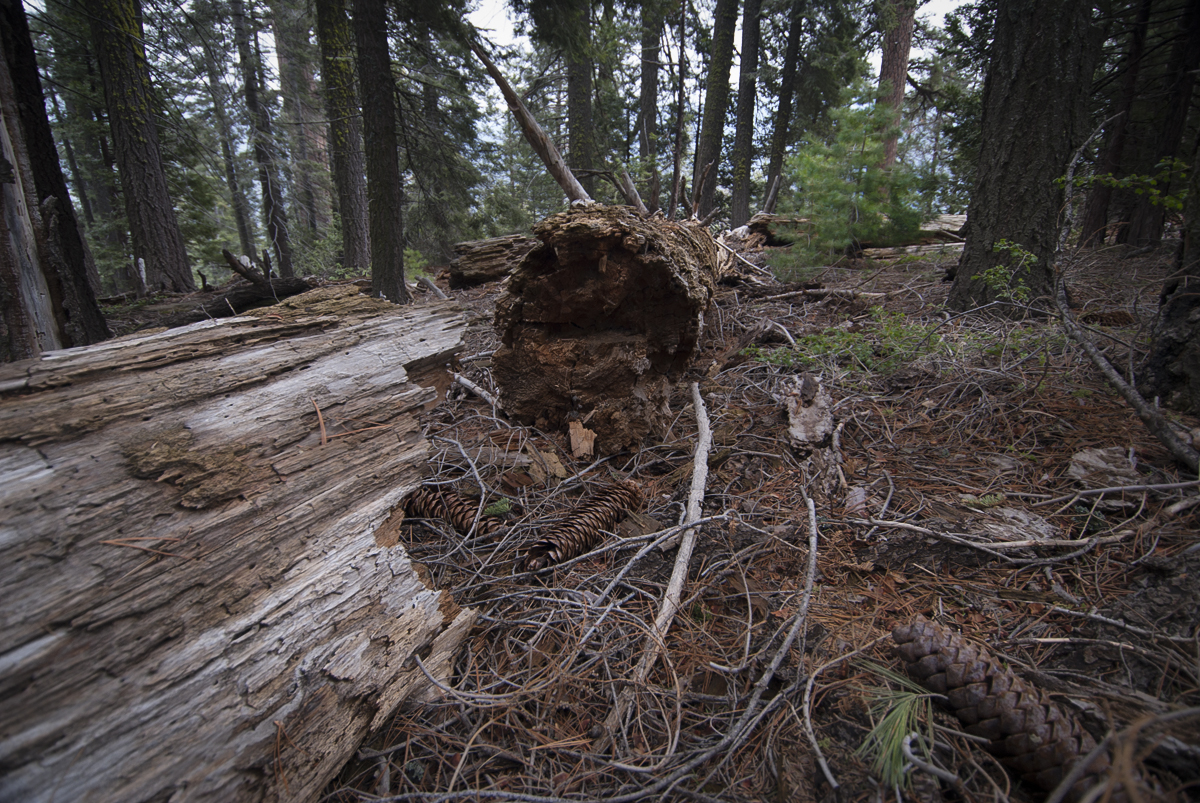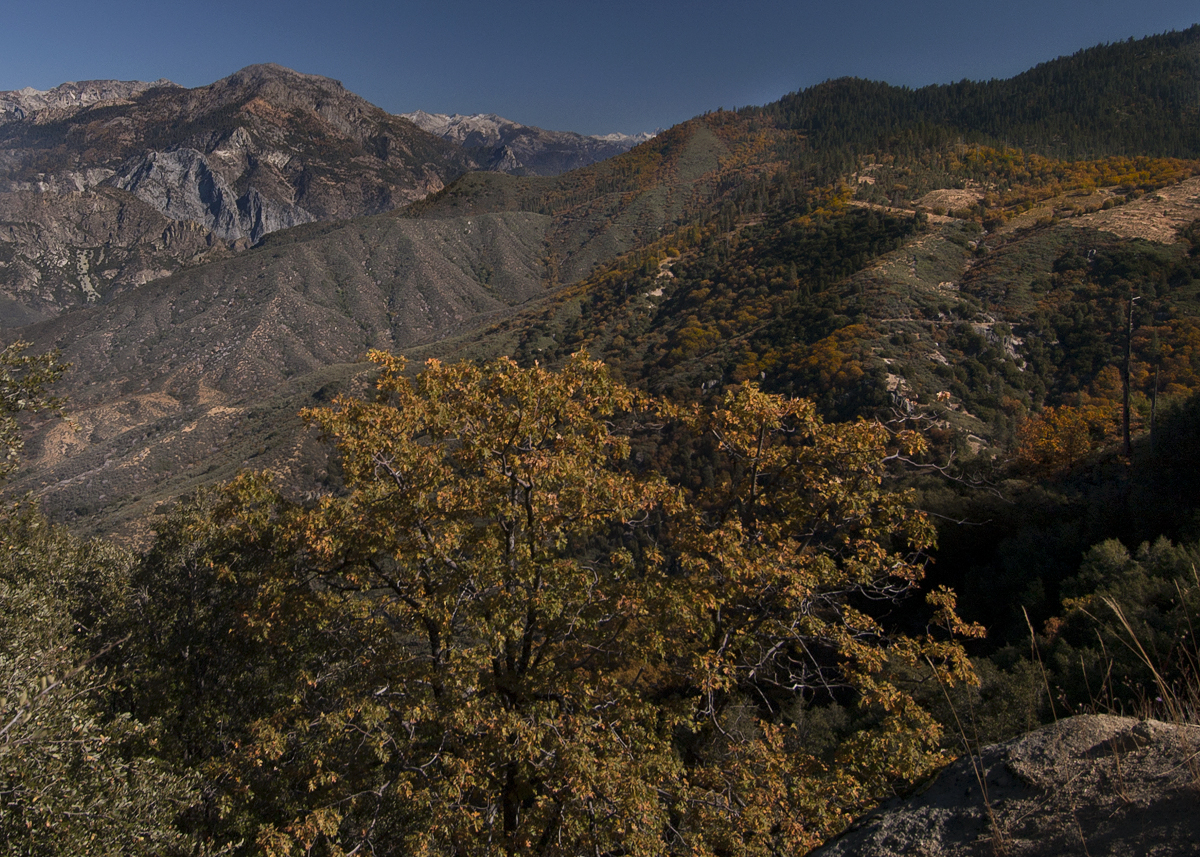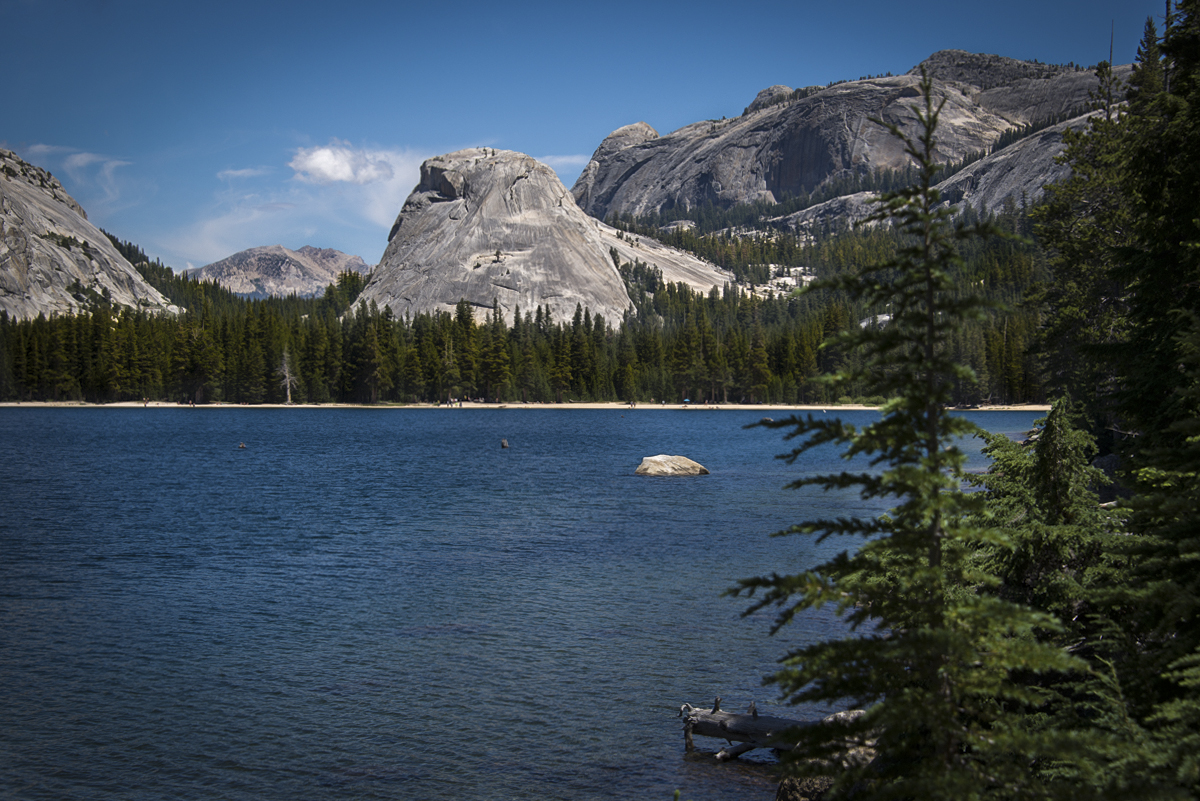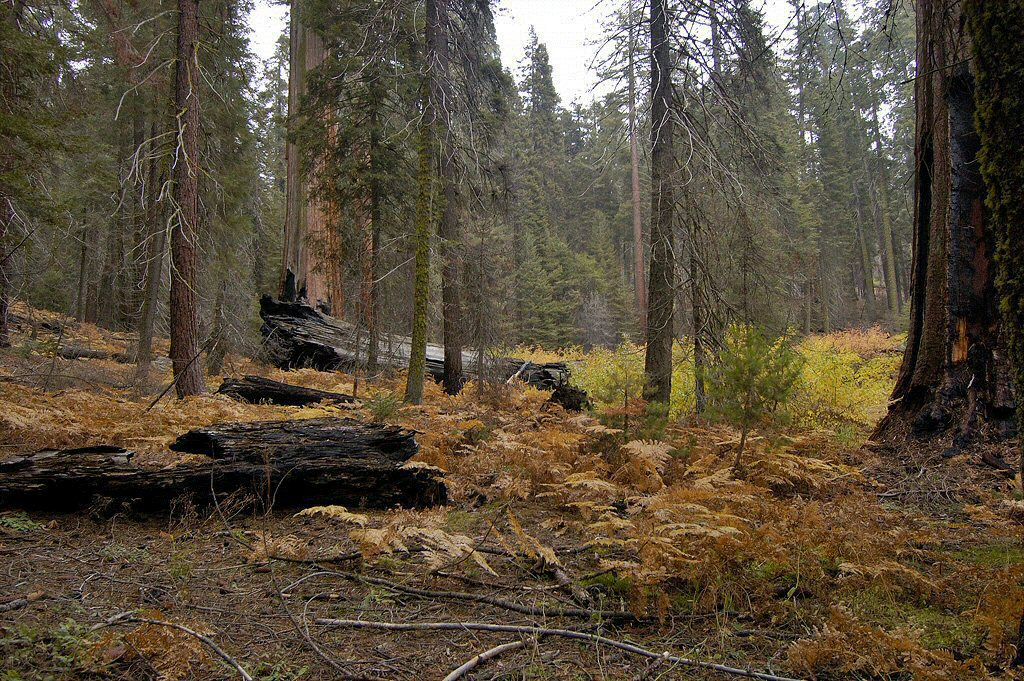Off-trail direction and course. Limited visibility on each path over a long distance. Intercepting a trail here and there. Fog density varies, but that adds to the mystery of where you are and where you’re going. Where the atmosphere is still and thin, there is a quality about the area very unique compared to seasons more familiar. With a still quiet, soaked forest floor, a fresh wet scent, and a stinging cold biting at the nose.
Tag Archives | sierra
Glacial Remnant
Here in this photo, the floor of Kings Canyon is about a mile beyond Cedar Grove. Which is just over 4,600 feet above sea level. With ancient upward vertical cliffs far above the lowest glacier-carved depth. It is said that rivers carve a “V” shaped valley. While glaciers carve a “U” shaped valley. Yet here what is to become a canyon with soaring walls on each side. The depth of Kings Canyon is at about 8,200 feet. One of the deepest canyons in the U.S. Further shaped by plentiful rivers, cascades, and the life they support.
Parched Valley
A distinct contrast to the Western side of the Sierra Nevada Mountains. Owens Valley is far more sparsely populated as compared to the San Joaquin Valley. Left uncultivated, one might wonder how common these separate valleys would appear along the vertical stretch of California’s Central region. The Western side is more irrigated, while receptive to the Pacific Ocean’s circulatory conditions and from seasonal rainstorms. To thereafter include late Fall season fog and Spring/Summer melt.
Shadow at Dawn
Our exit out of Yosemite involved crossing a pass over this range into Ansel Adams wilderness. We rose early to give us a lot of time to cross over Donohue Pass at about 11,000 feet. The early morning being renewed and awaken the senses. The best time to get ahead of afternoon thunderstorms that build up while being so exposed to the higher altitude, strong winds, and intense UV light. Once at the pass, we recovered a bit before the long descent over Island Pass and into Ansel Adams for an overnight stay at Shadow Lake.
In view here is the Lyell Fork, Lyell Glacier with Lyell Peak and Mt Maclure to the upper right out of view.
Cascade Cliffs
A small yet popular slice of Yosemite wilderness. Below Clouds Rest with Little Yosemite Valley, Cascade Cliffs, Bunnel Point, and Liberty Cap in the foreground. A well-trodden place by people who have overnight permits to explore and experience Yosemite. The bottom-most part of this photograph is Little Yosemite Valley with the Merced River which runs through it. The route to Half Dome runs through here. Probably one of the most photographed areas of Yosemite.
Under Grey Skies
Even under grey skies, the Marble Fork of the Kaweah River gives a most beautiful view of the natural order. After decay, forceful winds, raging storms, and harsh exposure, every element comes to settle in a most restful way. Where there are peace and perfect solitude, or where there are uncertainty and restoration. Where the heart grows full by closely listening to what such a place would say.
Beneath It All
The initial growth conditions of this forest group were just right to support the early development of these conifers. Sequoias are conifers because their cones bear seeds which in turn can generate new growth. For these living beings to continue their growth over such a large period of time really says quite a lot about where they were and what lies beneath them.
Lost Grove
Sometimes setting off from the beaten path is the way to go. Even with the risks that come with that, there is something within that pulls you to look further into what you see in the distance. With confidence about the way back, a new discovery becomes much better rewarded and appreciated. As temporary as they are, natural occurrences make for the most beautiful places.
Regeneration
When a tree is felled, that is when a regeneration process of sorts begins. As trees fall into decay from exposure, the weather, and wildlife, they become a source of shelter and food for wilderness creatures. Pine needles and duff become bedding for deer and bear. They become the material birds to use among their nests. The bark provides shelter for insects. Insects that in turn become eaten by scavengers. Rough and calm winds carry bark and debris into the forest floor which in turn serves as fuel for natural wildfires that occur from time to time.
Contour of Color
On a Summer afternoon heading down into the canyon, you often come upon fantastic views. The contour of the terrain, the color, and the range of flora comes into full display. The closer to the Fall season you are, the more likely you’re able to a greater variety of color both at a distance and up close.
Clear as Day
A squared and up the center image of Tenaya Lake and its surrounding domes. A mid-day photograph to reveal the character of the area. Between Tuolumne and Yosemite Valley, this lake is a popular destination for families for day use. The mid-shoulder up to the right is the route up Sunrise and to the backside of Yosemite Valley. Heading toward Cloud’s Rest, Half Dome, and Little Yosemite Valley.
Search
More results...
Translate
Dedicatory
Recent Posts
Currently Reading
–





currently-reading





currently-reading





currently-reading





currently-reading

